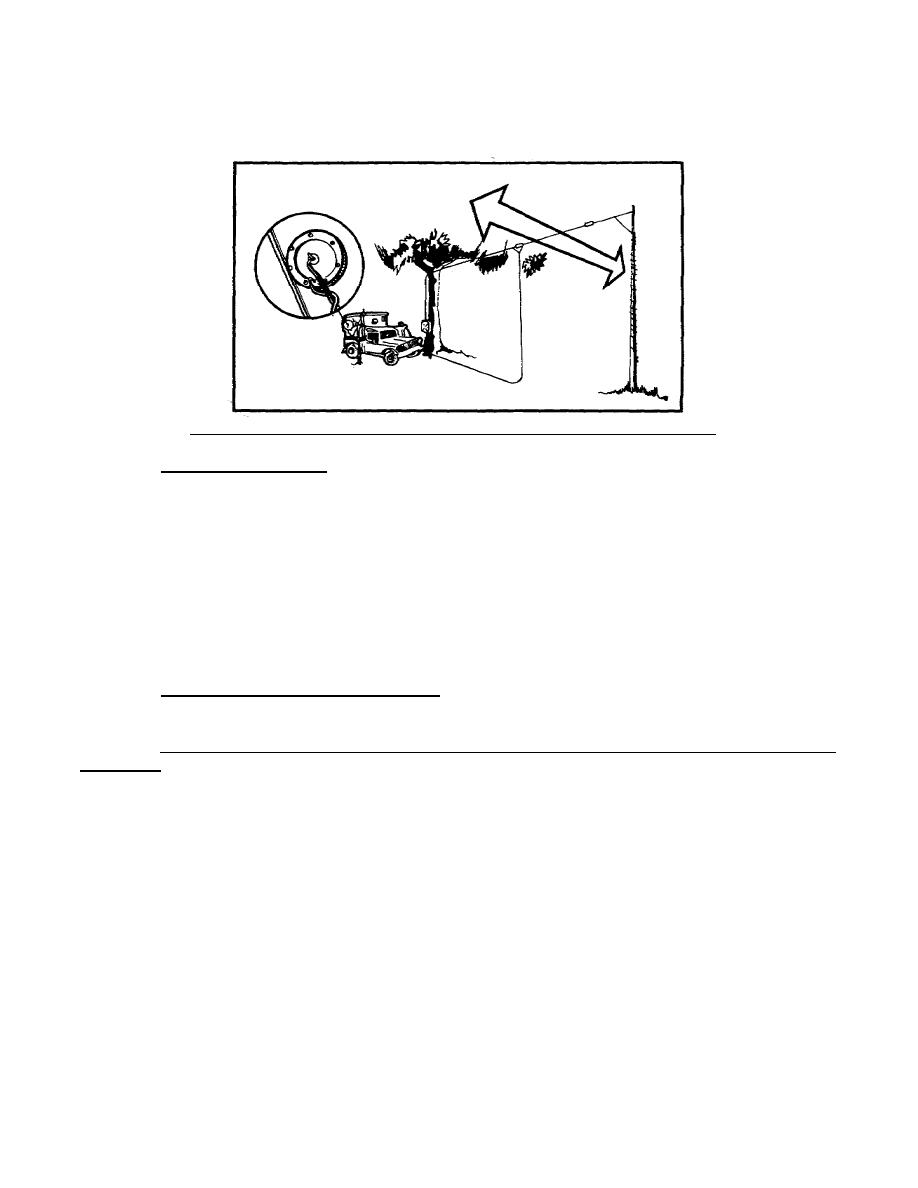
Step 6.
If needed, use counterweight (water can is used in Figure
40) to prevent high winds from breaking the antenna. Counterweight
also helps keep the antenna taut and level.
Figure 40.
Expedient doublet (bidirectional) antenna.
b. Connect to radio.
Bring one end of the transmission line to the
antenna connector, and insert it into the "hot" center of the antenna
connector.
The ground should be as close as possible to the antenna
connector (Fig 40).
32. EXPEDIENT LONG-WIRE ANTENNAS.
The most practical antenna for
combating jamming is the long-wire antenna, because it is highly
directional. By pointing the antenna toward the receiving station antenna,
transmissions are almost impossible to detect or jam. The antenna AT-984A/G
is an issue item. Expedient long-wire antennas are easily fabricated by use
of WD-1/TT field wire.
a. Expedient
long-wire antenna.
This antenna operates in the same
manner as antenna
AT-984A/G. The long-wire antenna can be easily fabricated
from 100 to 150
feet of WD-1/TT field wire.
For best performance, the
antenna should be
two or more wavelengths long. (Use the formula to compute
length.)
Step 1.
Pick a support at least 15 feet off the ground.
Step 2.
Move the radio (vehicle) close enough to the support to
connect one end of the expedient antenna to the antenna connector on
the receiver-transmitter.
Step 3.
Use rope or wire to anchor the antenna to the support.
Step 4.
Connect the antenna to the hot center of the antenna
connector (Fig 40), and ground the radio.
Step 5.
To make this antenna unidirectional (one direction), add
a 500- or 600-ohm resistor at the end of the antenna closest to the
support (Fig 41).
57



 Previous Page
Previous Page
